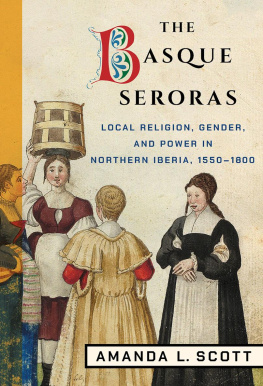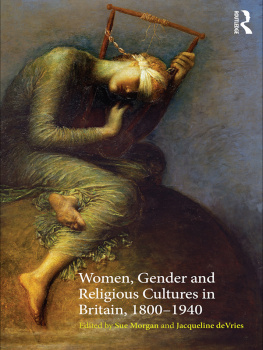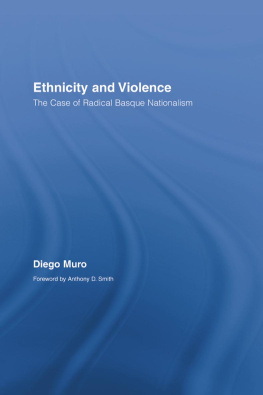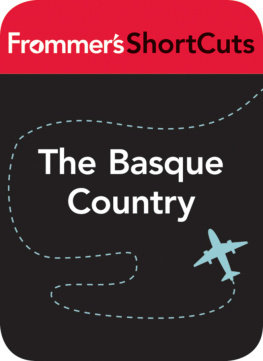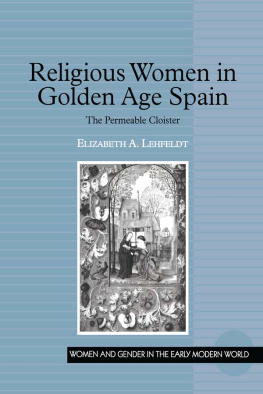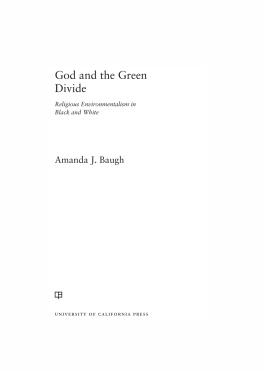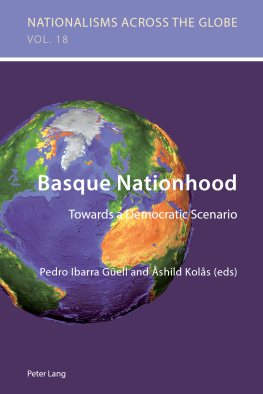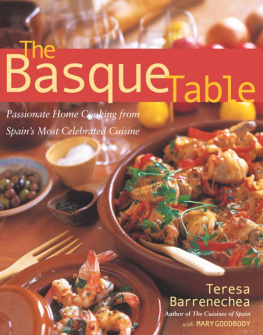A CKNOWLEDGMENTS
The ten years of research that went into writing this book mean that I have a lot of people to thank. I estimate that I have spent approximately ninety-five weeks in Spain and France (and probably more) over the course of research and writing for this project. Above all, I am grateful to my parents and my sister for their patience through all these absences.
In Pamplona, my first thanks go to the first archivist I ever met: Don Jos Luis Sales. Ever since I first set foot in the Archivo Diocesano de Pamplona (ADP) as an undergraduate, Don Jos Luis has been an endless source of knowledge about Navarre and a joy to have as a guide and fellow historian. Later, Teresa Alzugaray became a close friend during my many hours at the ADP; outside the archives, she introduced me to the life and culture that make Pamplona such a special place. Peio Monteano and Maripat Zacher became my family away from home while I lived in Pamplona, and with them I explored the best hiking trails, restaurants, and poteo routes of Navarre. Miriam Etxeberria, Berta Elcano, Flix Segura, and the rest of the staff at the Archivo Real y General de Navarra (AGN) have been exceptionally kind and welcoming over all these years. Thank you also to Ana Otegi and the always-smiling staff at the Archivo General de Gipuzkoa, to Ramn Suquia and Kontxi Zabaleta of the Archivo Histrico de Protocolos de Gipuzkoa, and to the staff at the Archivo Histrico Provincial de Bizkaia. The library staff and faculty at the Center for Basque Studies at the University of Nevada, Reno, have helped give this project depth and detail, and provided it with an anthropological perspective; I would like to particularly thank Xabier Irujo and Joseba Zulaika. I owe a particular debt to the various church archives I have accessed over the years and that do a great cultural service in preserving historic documentation while also making it free and available to the public. In this respect, the Archivo Histrico Diocesano de San Sebastin is a model archive and I deeply appreciate the work of Mara Carmen Urteaga and Jos Angl Garro.
Many people have talked me through research uncertainties, read drafts, or listened to conference talks stemming from this project over the years. Thank you to Kit French, Liz Lehfeldt, Sally Nalle, Alison Weber, Allyson Poska, Jennifer Mara DeSilva, Thomas Cohen, Jess Mara Usunriz, Gretchen Starr-Lebeau, Stephanie Kirk, James Amelang, Colin Rose, and Rob Clines, among many others. Bill Christian read two chapter drafts in record time while I was still in the archives and gave me the needed reassurance that I was on the right track. Celeste McNamara and Charlie Keenan have attended more of my conference talks than I can count, and their comments and complementary projects have influenced my own work immensely.
Friends at Washington University in St. Louis and the United States Naval Academy provided invaluable support as I finished this project, and I would like to particularly thank Molly Lester, Kelcy Sagstetter, Matthew Dzinniek, Rick Ruth, and Mary DeCredico; Molly deserves special praise for letting me drag her rock climbing while also listening to me ramble on about Basque history. The members of Washington Universitys Early Modern Reading Group read portions of this project from beginning to end and I have incorporated many of their comments. Derek Hirst and Mark Pegg asked the most difficult questions about this project, and pushed me to be clearer in my writing and use of evidence. From her Gender in Early Modern Europe course that I took my first year of graduate school to political protests in downtown St. Louis during my last year, Christine Johnson was the model of the kind of professor I hope to become inside and outside of the classroom. I would also like to thank Bianca Lopez, Lisa Lillie, Luca Foti, Jenny Westrick, Dale Kretz, Max Forrester, and Sarah Bellows-Blakely. Thank you to Elyse Singer and Jacob Labendz for their friendship while I was away on my fieldwork year and after. James Palmer deserves a special acknowledgment for his willingness to endure my practical jokes and constant questions.
Much of the research for this project was supported by a Mellon Foundation grant from the Council on Library and Information Resources (CLIR-Mellon), as well as by summer grants from the Graduate School of Arts and Sciences at Washington University in St. Louis and by the John Tracy Ellis Dissertation Prize from the American Catholic Historical Association. Writing was supported by a fellowship from Washington Universitys Center for the Humanities and by a Charlotte W. Newcombe Doctoral Dissertation Fellowship, administered by the Woodrow Wilson Foundation. This project would not have been possible without the determined commitment from these organizations to see projects in the humanities flourish and proceed in creative and intellectually independent ways. To protect free speech, creative thinking, and engaged research, we have a duty to promote and fund such crucial organizations, and I hope that readers will join me in doing all that we can to make sure that such funding is available for subsequent generations of students and scholars.
The final stages of this project were funded by a Junior Naval Academy Research Council grant and faculty development funds. Two anonymous readers provided much needed affirmation about the value of this project, as well as concrete suggestions about how to open up my argument and find a looser voice. I appreciate their close attention and I am grateful for their suggestions, which I have worked hard to incorporate into the final version. Similarly, thank you to Ange Romeo-Hall, Kate Gibson, Kate Mertes, and my editor, Emily Andrew, for their patience and for shepherding me through a new and unfamiliar process.
Finally, this project has been deeply shaped by the mentorship and friendship of Lu Ann Homza and Daniel Bornstein. Lu Ann introduced me to the Pamplona archives as a senior in college, taught me early modern Spanish paleography, and saw me through my first forays in attempting to make sense of religious reforms, misbehaving priests, and the violence of early modern village life. It was during these first trips to the archives that I stumbled on the seroras and realized their potential for reassessing womens place in early modern religious history and their role in shaping, diverting, and redirecting institutional policies. Initially, this was just a study of local religious women, but under Daniels direction, this became a much more meaningful project about early modern Europe, the Reformations, and women as religious actors, leaders, movers, and changers. Thank you for your years of unwavering confidence and encouragement, and for being the best advisor I could have hoped for. Gracias, grazie, and eskerrik askoI hope I can do the same for my students.
Introduction
As the mists cleared in Hernani, bells echoed among the towns hills, ringing out from each of the towns nine shrines, and chasing away the thunder with each peal. Tugging at the ropes of each of these bells werent priests or sacristans, but rather celibate laywomen who were elderly but strong after a life of hard work caring for these remote sanctuaries. At the same time in Elorrio, a middle-aged woman and her niece moved slowly about their parish church, inventorying the jewels, books, and wax under their care. The holy water was low, and they made a mental note to refill the stoup later. Somewhat east in Deba, another woman carefully dressed an ancient black Madonna, protecting her from the cold, and carried the statue into her bedroom for the evening. Along the coast in San Sebastin, in a salt-stained parish church and under the steady light of a whale-oil lamp, two more women prayed for the safe return of the towns fishermen. Further south, another woman consulted with the cathedral chapter of Tudela about upcoming plans to feed the citys poor and sick; another up north in the village of Zubieta carefully polished her churchs silver and folded the white, freshly laundered altar cloths. In Sunbilla, a younger woman helped the priest into his chasuble and handed him his missal, while in nearby Etxalar, another woman swept the parish church and tried not to think about side-long glances and whispers of

